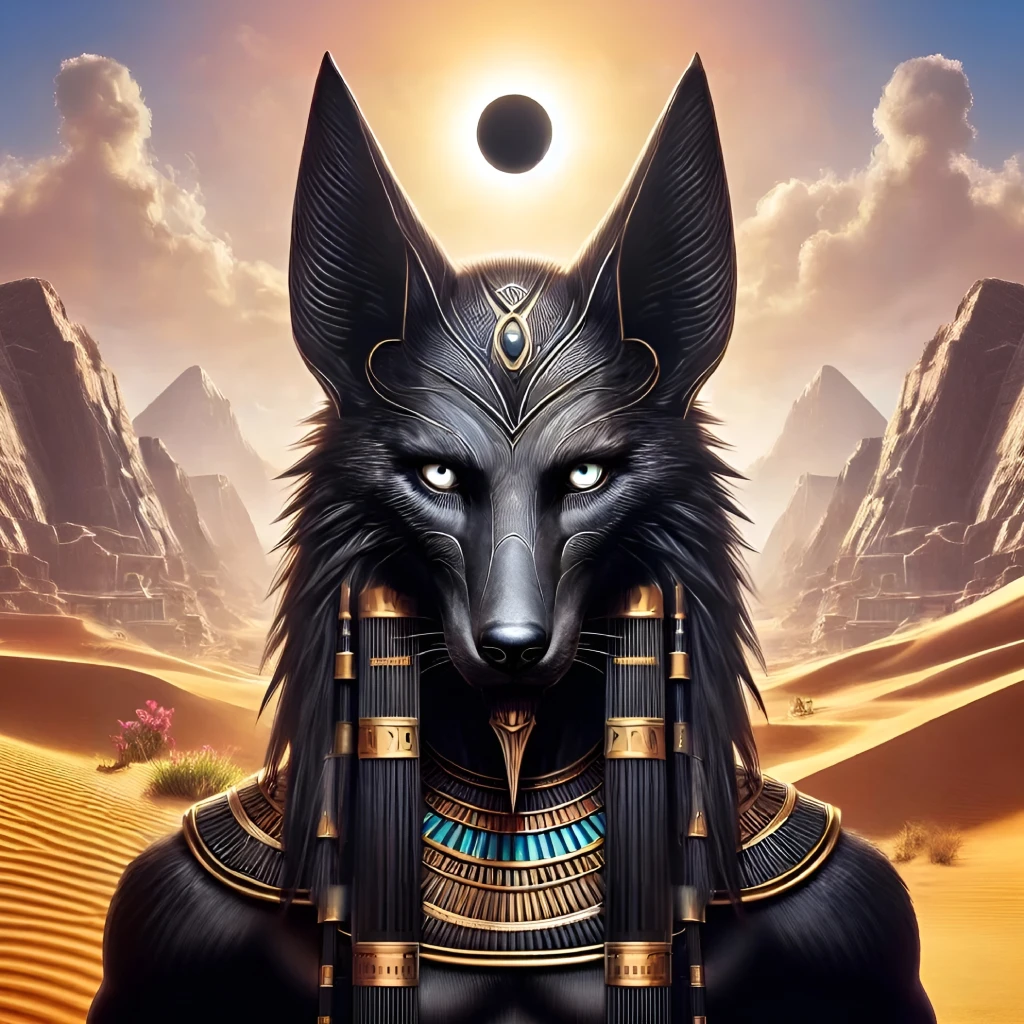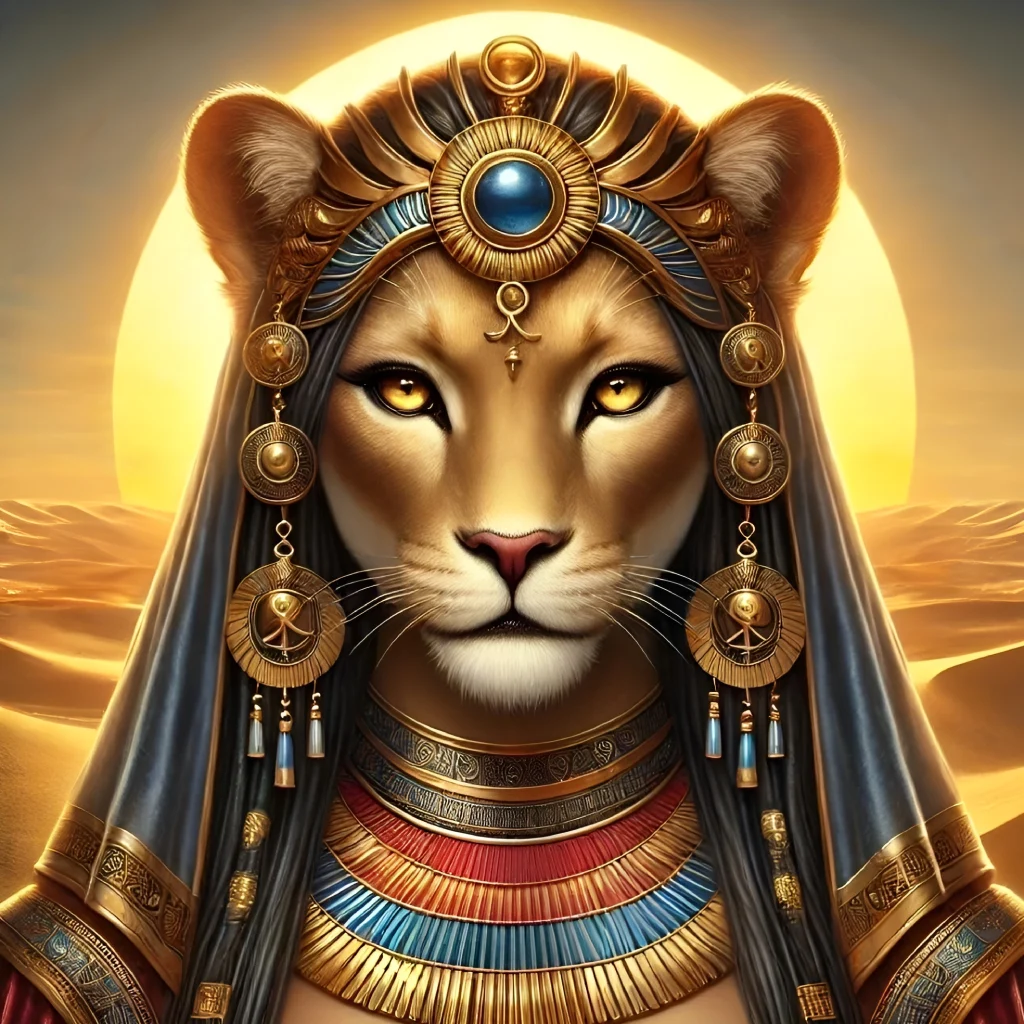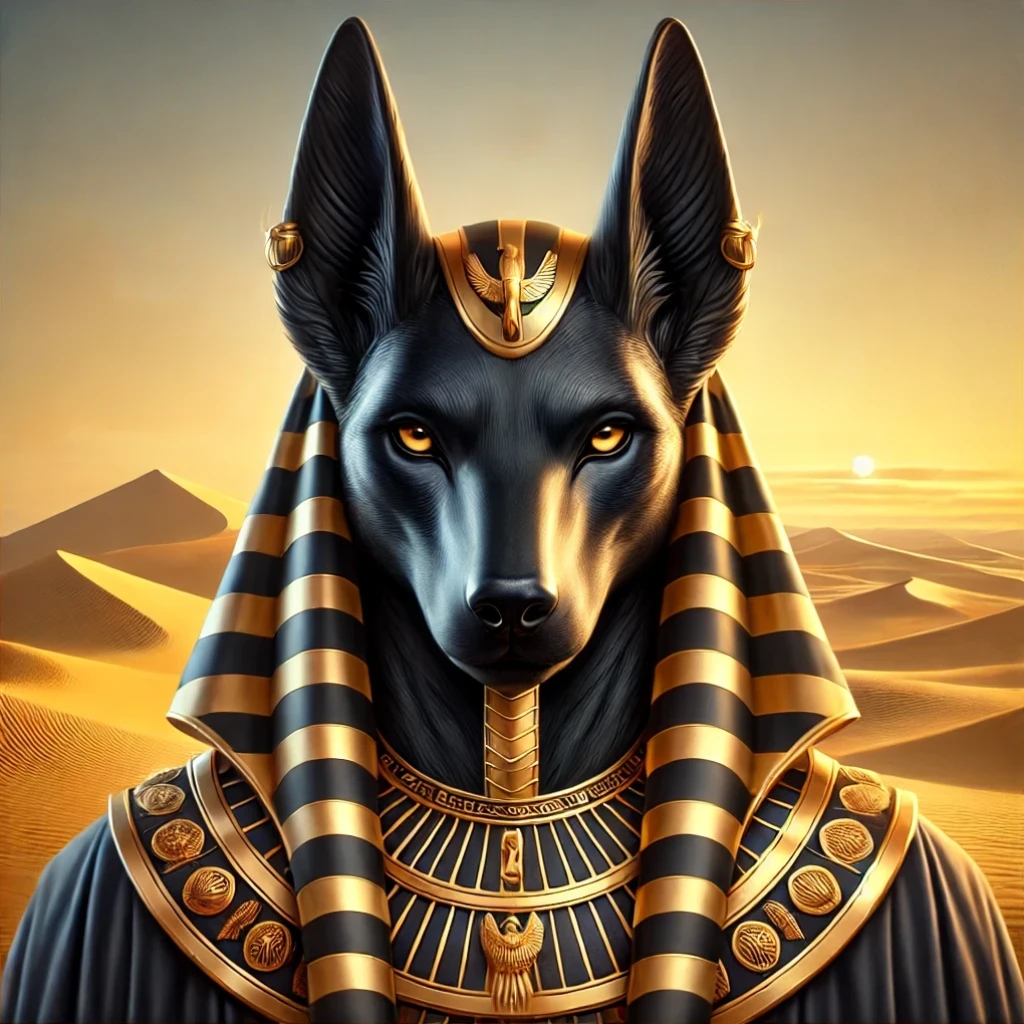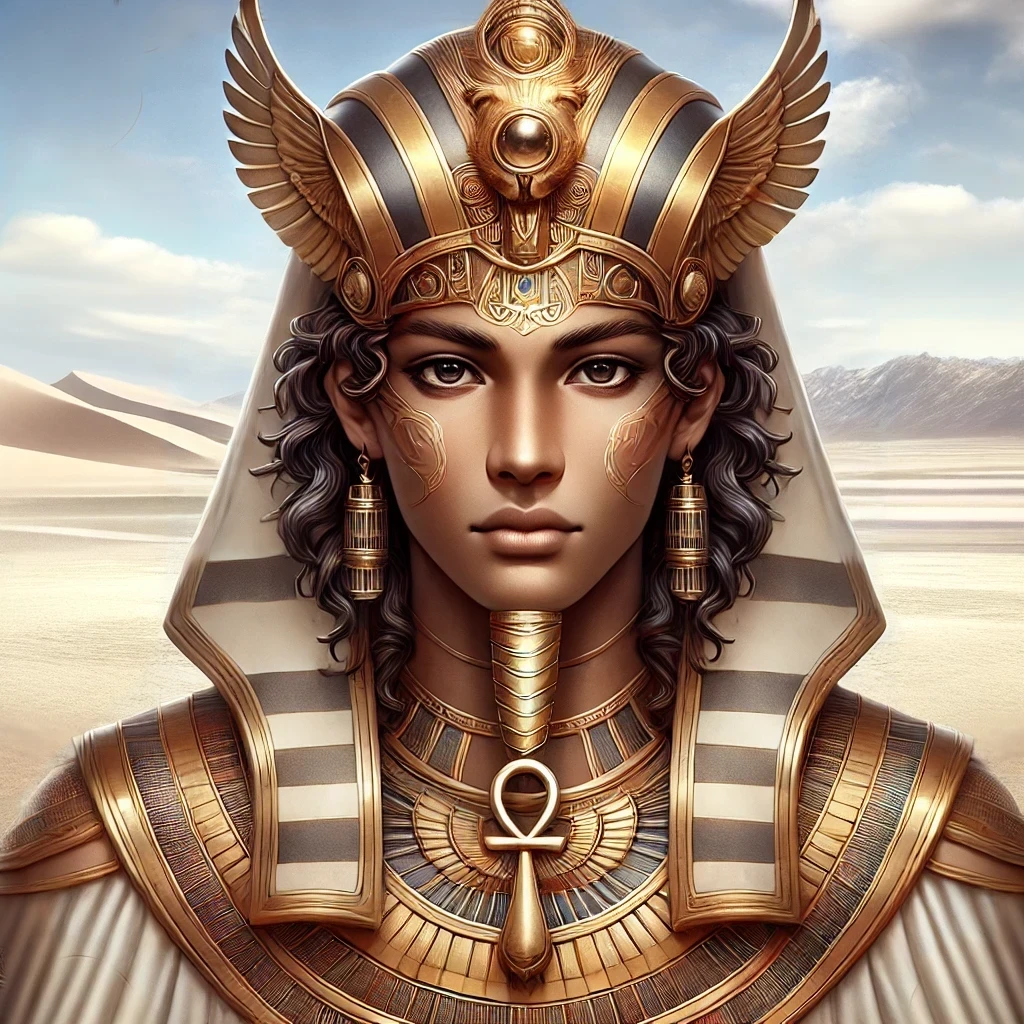The ancient Egyptian deity Seth, also known as Set, Sutekh, or Setesh. Revered as the god of chaos, storms, and the desert, he also held titles such as “Lord of the Red Land” and “Defender of Ra.” His name, derived from the root “set,” is often interpreted as “instigator” or “causer of turmoil.” Represented in contrasting roles—as both a protector and a disruptive force—his legacy spans thousands of years and countless transformations in cultural perception.
Origins
Early Mentions
Seth’s origins trace back to Egypt’s Pre-Dynastic period (before 3100 BCE), where he emerged as a deity associated with the arid desert and the forces of chaos. By the Old Kingdom (c. 2686-2181 BCE), his role expanded, becoming both an adversary to order and a crucial protector of the solar barque.
Geographic Associations
The deity’s worship was particularly prominent in Upper Egypt, with Ombos (modern Naqada) and the desert oases serving as primary centers of devotion. His connection to the Red Land—Egypt’s barren deserts—symbolized the stark dualities central to Egyptian thought.
Evolution Over Time
Seth’s reputation underwent significant shifts over millennia. In earlier periods, he was venerated for his strength and ability to ward off Apophis, the serpent of chaos. However, during the New Kingdom (c. 1550-1070 BCE), political turmoil and foreign invasions led to his association with outsiders and malevolence.
Appearance
Iconography
The deity’s most distinctive feature is the “Seth animal,” a creature with an elongated snout, squared ears, and a forked tail. Scholars remain uncertain about the inspiration for this mythical beast, which combines features of aardvarks, donkeys, and other desert creatures.
Artistic Depictions
In human form, Seth is often depicted as a man with the Seth animal’s head. He may carry an ankh or a was-scepter, emphasizing his connection to power and vitality. Some images show him wielding a spear, reflecting his role as a protector against chaos.
Abilities
Strength in Battle
Known for unparalleled physical strength, this deity was essential in combatting threats to Ma’at, the cosmic order. He played a pivotal role in defending Ra’s solar barque against Apophis, ensuring the sun’s daily journey across the sky.
Control Over Elements
As a god of storms, the Lord of the Red Land wielded the forces of wind and lightning, embodying both their destructive and purifying aspects. His command over these elements made him a deity of fear and reverence for sailors and desert travelers.
Duality and Balance
Despite his chaotic nature, Seth’s abilities were indispensable to the Egyptian pantheon. His strength and unpredictability were often harnessed to maintain equilibrium, highlighting the nuanced view ancient Egyptians held about chaos and order.
Myths
The Contention of Horus and Seth
One of the most famous tales involves the prolonged struggle between Seth and his nephew Horus for the throne of Egypt. Depicted in the “Contendings of Horus and Seth,” this myth encapsulates themes of legitimacy, power, and reconciliation. After numerous trials, including a boating race and a courtroom battle, Horus ultimately triumphed, but Seth retained an important role in the divine order.
Protector of Ra
Contrary to his villainous portrayal in some stories, Seth also served as a defender of Ra’s solar barque. Each night, he stood at the prow of the boat, battling Apophis, the serpent of chaos, ensuring the sun’s rebirth at dawn.
The Murder of Osiris
The god’s darker side is epitomized in the myth of Osiris’s death. Consumed by jealousy, Seth tricked and killed his brother Osiris, dismembering his body. This act set the stage for Isis’s quest to resurrect Osiris and the eventual rise of Horus as his avenger.
Symbolism
Associated Objects
Key symbols include the was-scepter, representing dominion and power, and the Set animal, embodying his ambiguous nature. The red crown of Lower Egypt is also linked to him in certain contexts.
Sacred Animals
Seth’s association with animals like donkeys, hippopotamuses, and desert creatures underscores his ties to wild, untamed forces. These animals, often seen as dangerous or chaotic, reflect his role as a liminal figure.
Plants and Minerals
In some traditions, Seth is linked to desert flora and red-colored minerals, emphasizing his connection to the barren, harsh landscape.
Relationships
Family Ties
Seth’s relationships are fraught with conflict and complexity. As the brother of Osiris, Isis, and Nephthys, he occupied a central role in many myths. His tumultuous marriage to Nephthys and his rivalry with Horus define much of his narrative.
Connections to Foreign Lands
Later periods associated Seth with foreign deities and invaders, reflecting Egypt’s struggles with external powers. This alignment further solidified his reputation as a chaotic and unpredictable force.
Rivalries
The conflict between Seth and Horus remains one of the most enduring rivalries in Egyptian mythology, symbolizing the struggle between chaos and order, youth and experience.
Trivia
- Unknown Origin of the Seth Animal: The creature associated with him has no clear zoological counterpart, adding to his mystery.
- Role in Magic: Despite his reputation, he was invoked in protective spells, especially for repelling snakes and scorpions.
- Demonization Over Time: By the Late Period, Seth was increasingly depicted as malevolent, reflecting shifts in political and cultural contexts.
- Influence on Modern Media: The deity’s complex persona has inspired numerous portrayals in literature, games, and films.
- Astronomical Links: Some scholars suggest connections between Seth and celestial phenomena, including eclipses and storms.



